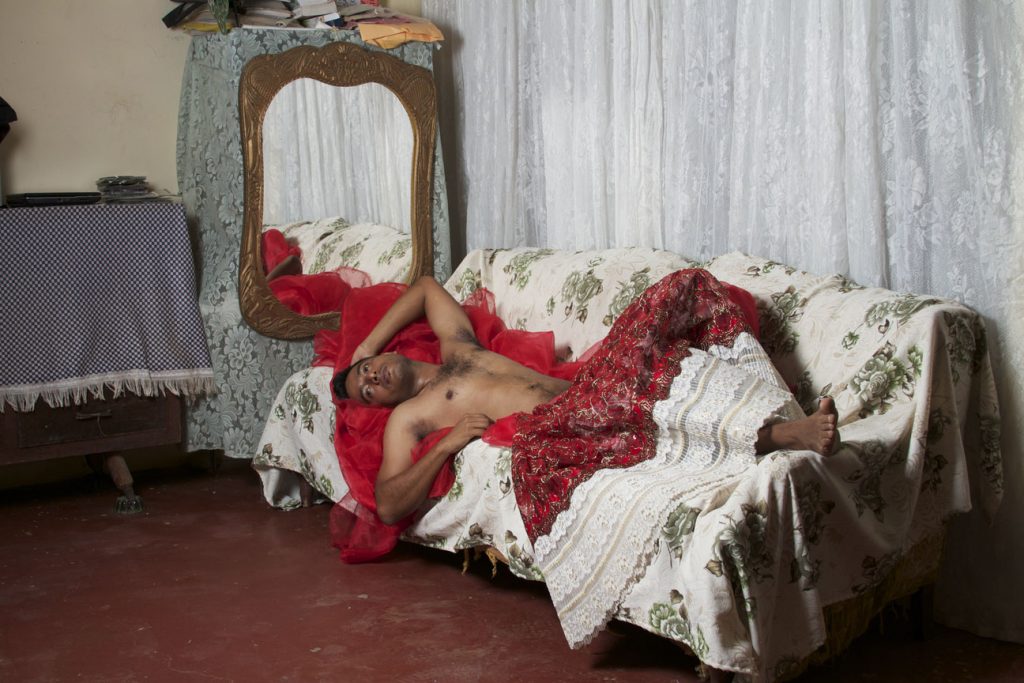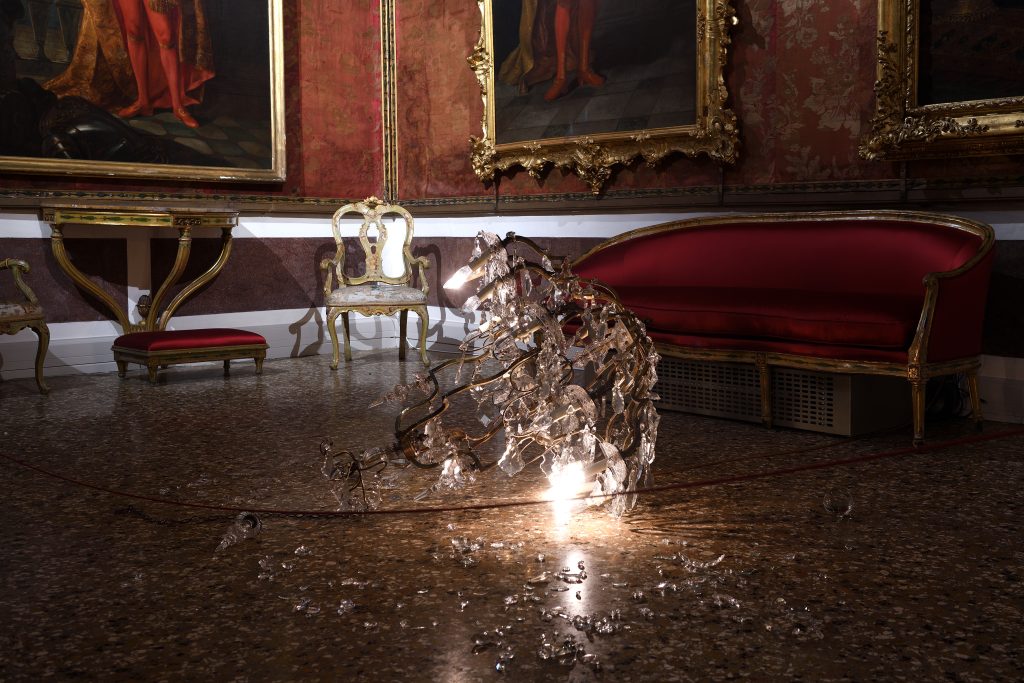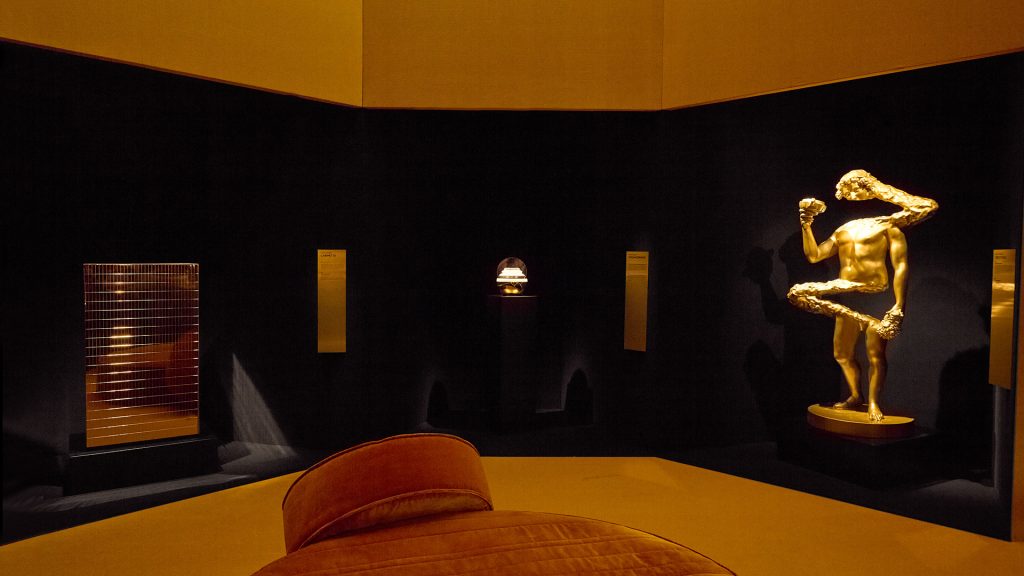TRNK’s “MIEN” Group Exhibition of Work by Queer Artists of Color
Celebrating nuanced representations of LGBTQ+ identity, while avoiding the white gaze

Last week, NYC-based design studio TRNK launched MIEN—an online exhibition that spotlights, celebrates and sells work by queer artists of color. The photography show consists of gloriously nuanced and tender portraits that explore identity beyond the oftentimes shallow or simple concept of visibility. Rather, TRNK’s statement reads, “these images take authorship over individual lived experience while acknowledging contributions to a representative body politic.” With work by Elliott Jerome Brown Jr, Naima Green, Texas Isaiah, Dorian Ulises López Macías, Nelson Morales, Simone Thompson, Derrick Woods-Morrow and Guanyu Xu, the collection of works traces queer identity, and the divine diversity within. Each print is also available for purchase, with all proceeds donated to New York City’s Ali Forney Center, an organization that supports LGBTQ+ homeless youth through services including drop-in centers, emergency housing, education and employment programs, and comprehensive healthcare.
We spoke with TRNK co-founder Tariq Dixon about the project and why it’s so important right now.

Tell us a little about the origins of this exhibition. Was there a catalyst that sparked the project?
For a few years now, I’ve felt both a tension and a disconnect between my personal identity and the brand that I had built. As a queer person of color who confronts questions of race, identity, politics, capitalism, and sexuality on a daily basis, I had never used my business as a platform for any of my strongly held beliefs. I worried that it wasn’t an appropriate forum, or I was too afraid to confront my own hypocrisy. But finally this year, reconciling those tensions felt especially urgent—even if imperfect and not fully resolved. Curating this group exhibition for Pride was an initial step. The show allowed me to examine questions that I’ve personally grappled, and leverage the brilliant works of these artists for new layers of perspective.
It was crucial for you to have this exhibition avoid conflating white desire or exotification/fetishization of Black and brown bodies with the exploration and celebration of identity. How did you approach that?

Yes, avoiding the white gaze was important, alongside distinguishing between “representation” and “visibility.” Oftentimes, queer and people of color are granted visibility but devoid of their own stories. We see this all of the time in fashion and pop culture, where black and brown bodies are celebrated within very strict confines of mainstream standards of beauty, and without a personal narrative behind them. Or these institutions only amplify depictions that fit within consensus stereotypes—for example, trauma, urbanism, hyper-sexuality, etc. Artists of color can definitely choose to cater to these limitations, but I specifically sought artists of color who don’t operate within that framework.

How did you select the artists involved? And who selected the pieces?
These were all artists that I had discovered in various ways and had been following for different amounts of time. I selected each photo from the artists’ existing bodies of work—so in many ways, the art likely informed the idea over time. I was looking for more candid styles of portraiture that celebrate a shared queer identity, but not at the expense of individual lived experiences (often the de facto implication for people of color). I think each of the works selected is so irrefutably unique and unapologetically queer, even when overt displays of sexuality are absent. It was important that collectively, this art expressed the nuances, layers, and diversity within queer identity, which includes a spectrum of gender expressions, sexualities, and quite simply, personalities. Achieving that diversity was hugely important.
All proceeds are being donated to the Ali Forney Center—tell us a little about why you chose that organization.
Most of us in the NYC queer community are familiar with AFC’s incredibly important mission, but I felt like their work was especially urgent given the ongoing pandemic. When other non-profits made the difficult decision to suspend their services, the AFC didn’t have such a choice, since so many of our city’s most vulnerable call the center home. Additionally, 90% of the center’s clients are Black or Brown and 75% have a history with the police, making them susceptible to the concurrent pandemic imposed by our carceral state.

Was there a moment, a conversation, an image submission, something when you realized the exhibition was going to be really special?
You know, I had a short list of potential artists, but I had no idea what their responses would be (if any at all). As the responses started to roll in, and I began hearing more of the back stories behind the artworks, my excitement really started to peak. But truly, seeing all of the works together is when I felt most inspired. The works reaffirm how powerful we can be when we realize our own strength and beauty. Their conviction and fearlessness remind me to never look to anyone else for validation of my own humanity.
Coincidentally, we launched the series at a moment when we were continually seeing our faces in the media, but for all of the wrong reasons. In this moment, many of us really needed this sort of positive self-affirmation more than ever.
Hero image by Naima Green












